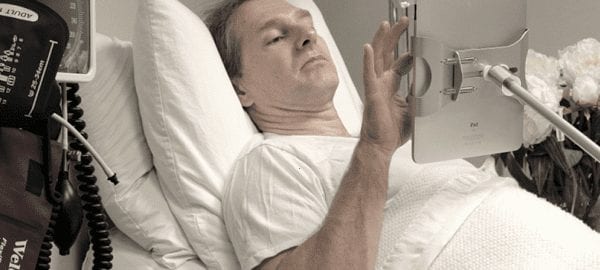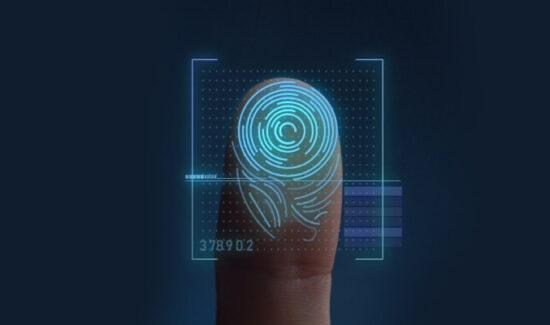Hospital-issued Tablets for Patient Use on the Rise, but Access Management Must Be Addressed

 The following is a contributed piece from Dean Wiech, managing director of Tools4ever, a global provider of identity and access management solutions. The piece discusses the changing landscape of hospitals and the care they are providing; hospitals are issuing mobile devices that help bring patients closer to their care and better connecting with their records and results. Hospitals are issuing their patients with tablets so they are better able to connect with their care providers.Dean provides some perspective in the following piece that helps address these concerns.
The following is a contributed piece from Dean Wiech, managing director of Tools4ever, a global provider of identity and access management solutions. The piece discusses the changing landscape of hospitals and the care they are providing; hospitals are issuing mobile devices that help bring patients closer to their care and better connecting with their records and results. Hospitals are issuing their patients with tablets so they are better able to connect with their care providers.Dean provides some perspective in the following piece that helps address these concerns.
One of the biggest movement currently taking place throughout healthcare is the provisioning of access to information for patients who clearly want access to more information about their own care, including being able to see their health records and communicate with their physicians through mobile devices, especially during in-patient stays. It’s during these times especially, that patients also want to be able to stay up to date with their care developments while not feeling as though they are outside of the information loop or not in control of their wellbeing.
Currently, one of the ways that several hospitals have met this need is by issuing patients tablets for their personnel use while they stay in the hospital. In so doing, the tablets allow the patients to easily access their information and stay up to date with the many aspects of their medical records, information about medications and other medical history. Additionally, several hospitals also have extended the use of tablet to other uses, such as for patient surveys for the hospital, for them to enter their dietary needs and for menu planning while staying in the hospital, creating patient email accounts or for access to other resources specific to the health needs of the individual patient.
While this is a great addition to the hospital’s patient resources, this can be an IT headache. When a new patient arrives at the hospital he or she needs to first be entered into the hospital’s Active Directory with the correct information then entered into the care system and any other appropriate systems, as well as be issues an email, and then issued a tablet. Provisioning patients in all of these systems can be time consuming, and tends to create a lot of work and logistical problems, especially since there is frequent movement in hospitals, between departments and geography within the physical location of the hospital’s property. Another obvious challenge is that new patients are coming into the care setting each day and other patients are being discharged. There’s also the time constraint in that the tablets should be issued during the patient’s first day in care so, optimally, administrators need to be given the devices during almost immediately upon check in.
One hospital on the East Coast experienced this issue. It wanted to be able to provide its patients with top quality service by providing them tablets, but the provisioning of accounts and issuing of the tablet caused a huge amount of work for the IT department since the task had been handled manually. Additionally, patients weren’t receiving their tablets until several days into their stays, which was a setback for the project and had missed the opportunity to engage patients from the start.
The hospital decided to solve this issue and alleviate much of the work by implementing an automated account management solution. This type of solution allowed the hospital to simply enter the patient data one time into the source system and have accounts automatically provisioned in all other systems and applications (care system, email, etc.). Now, the IT department can easily issue the patient a tablet for the duration of their stay. Now, instead of manually entering information in each system for the patient and having them wait to receive access and credentials, the patients receive everything they need quickly, according to the hospital’s mission and goals related to the program.
So, perhaps the biggest issue with this type of a program is equally simple and complicated: Passwords. What do health systems do about the issue of requiring patients to use passwords or other login credentials to access their health information and other information on their hospital-issued tablets? Obviously, the sick and weary receiving in-patient care certainly has enough to worry about other than remembering their credentials and passwords.
When a patient forgets his or her credentials and are locked out of the system how can they easily reset their password? Many hospitals have solved this issue by using self-service password reset solutions. When the patient registers and is setting up his or her tablet, they register with the solution and answer several challenge questions. Then, if they ever forget their credentials, the patient can easily and securely provide answers to their challenge questions and reset their passwords. In this manner, forgotten passwords do not turn into a time consuming issue for the helpdesk.
Overall, the use of tablets within hospitals is a new method that can be extremely beneficial for the many uses mentioned, as well as for many other unlimited options in the future. Hospitals have to ensure though that they have a process in place that can handle the needs of efficiently provisioning patient accounts and issuing them a tablet, as well as a possible solution for handling any password issues. Use of tablets in hospitals, in conjunction with an automated process for account and password management, allows both the IT department to efficiently provision tablets, so that patients can receive the benefits of this new technology.






















